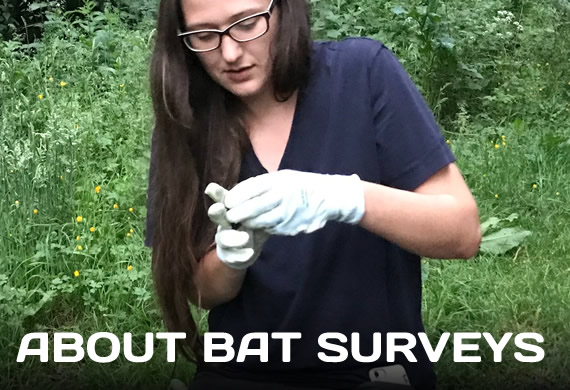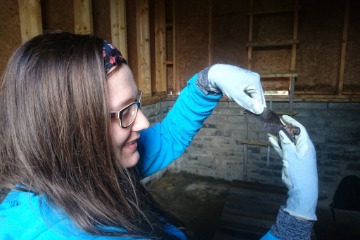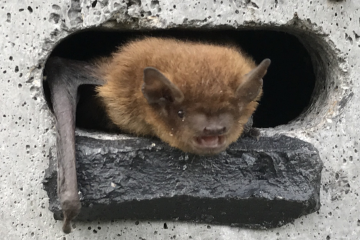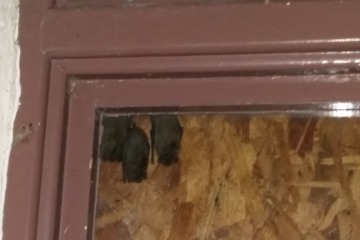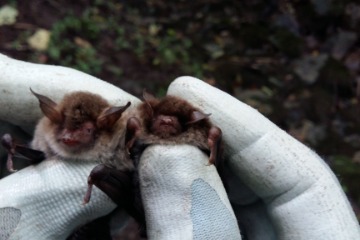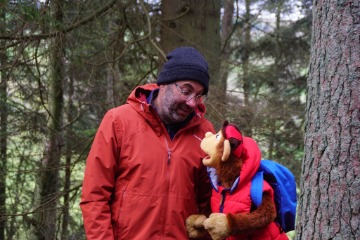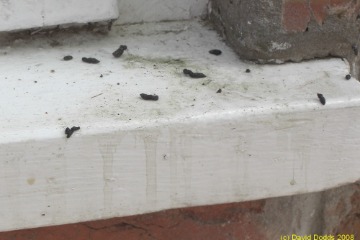
Some bat survey FAQs
What’s involved in a bat survey?
Stage 1 surveys (also called Preliminary Roost Assessments) are a daylight search for evidence of bat roosts and structures bats could roost in without leaving evidence. A check is usually also done for records of roosts and whether nearby habitat is suitable for bats.
Stage 2 surveys (activity surveys) involve between 1 and 3 visits to watch for about 2 hours at sunset or dawn for bats arriving/leaving. Ultrasonic detectors are used to “hear†bat calls and often infra-red video is also used.
How is the stage 2 bat survey decided?
If the stage 1 survey finds no evidence of roosts and no structures bats could roost in then no stage 2 survey is required. If a stage 2 survey is required then the level of roosting potential and the quality of the surrounding habitat directs whether 1, 2 or 3 stage 2 visits are required. These assessments are governed by national guidelines, adopted by local planning authorities.
When can bat surveys be done?
Stage 1 surveys can be done at any time of year. Stage 2 surveys in Scotland must usually be done between 1 May and 30 September, with at least one visit prior to 31 August.
How quickly can surveys be completed?
Guidelines require bat survey visits to be a minimum of 2 weeks apart and wider spacing often gives better results. We always start surveys as soon as possible. If you have a specific deadline, e.g. for a planning hearing let us know and we’ll do everything we can to assist.
What happens if a bat roost is found?
If planned work will disturb or destroy the roost we can apply for a derogation license for you. This usually requires mitigation in the form of a method statement and compensation measures, Typically this could involve time limitations, licensed supervision of part of the work and a replacement roost, such as bat boxes. We have extensive experience of working with clients to achieve the best outcomes for bats and developments.
Why are bats protected?
Bats are a vital part of our ecosystem, eating vast numbers of insects, including pests, but their population today is a fraction of what it should be. This is why all bats and their roosts are legally protected and harming or disturbing them is a criminal offence. Protection of roosts applies even when they are unoccupied. Unawareness of the presence of a roost is not a legal defence.
Why are bat surveys required?
Local planning authorities are obliged to consider bats (and other protected species) in all planning applications. If they consider there is a possibility of bats being present on a development site they require a survey to find out whether bats are on site and could be affected. A survey also gives best practice protection from the risk of inadvertently committing an offence.
What is a Preliminary Ecological Appraisal?
At sites with broader potential wildlife habitats planners may request a PEA (also called an Ecological Assessment/Appraisal or Extended Phase 1 habitat survey). This looks at whether other protected/important species or habitats may be affected and can often be done concurrently with a stage 1 bat survey.
What about other protected species surveys?
Local planning authorities may request surveys of other protected species, such as Badgers, Otters or Red Squirrels. At smaller sites we can often carry out these surveys concurrently with Stage 1 or PEA surveys.
Why use Bat Survey Scotland?
- Bat Survey Scotland is part of David Dodds Associates Ltd - Scotland leading bat survey specialists.
- Over the past fifteen years we have carried out many hundreds of successful surveys on behalf of our clients.
- We are proud of our reputation for delivering the highest standards.
- Our fees are competitive and we respond to our client’s needs.
- We have never had a report or license application rejected.
- We have the skills, experience and licenses to ensure you get the ecological support to complete your project successfully.

